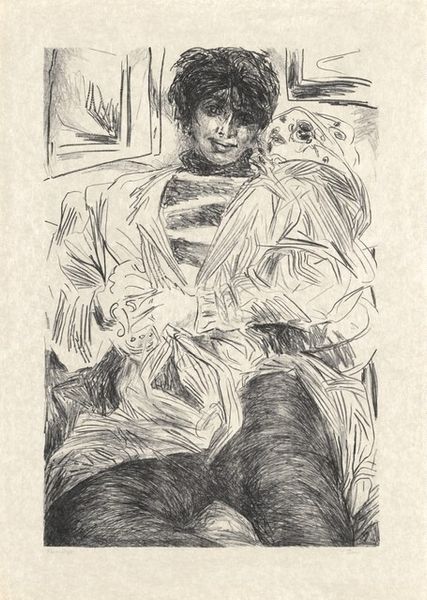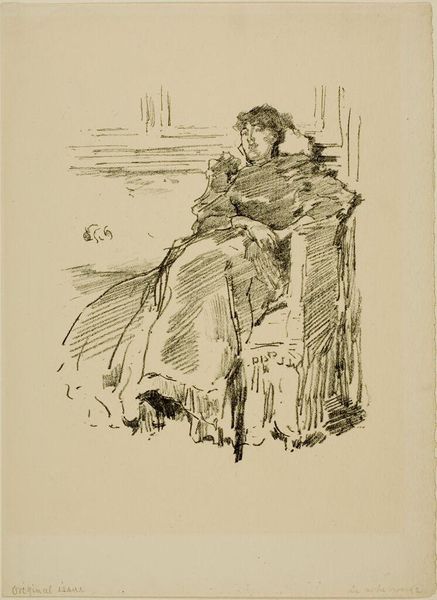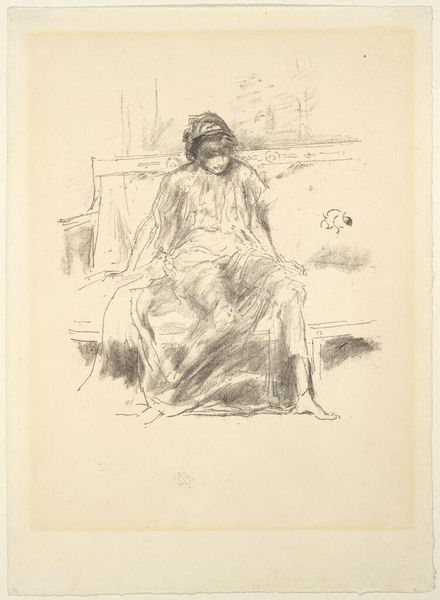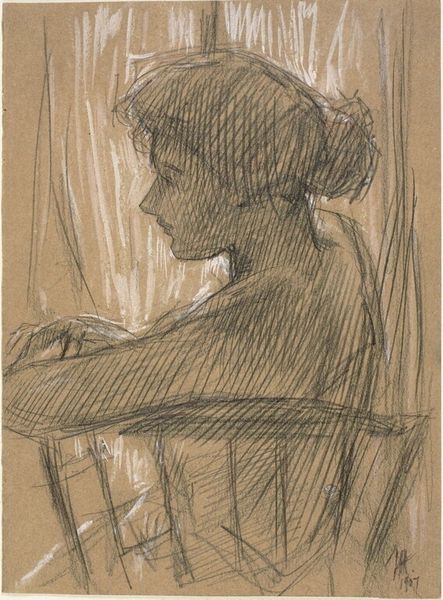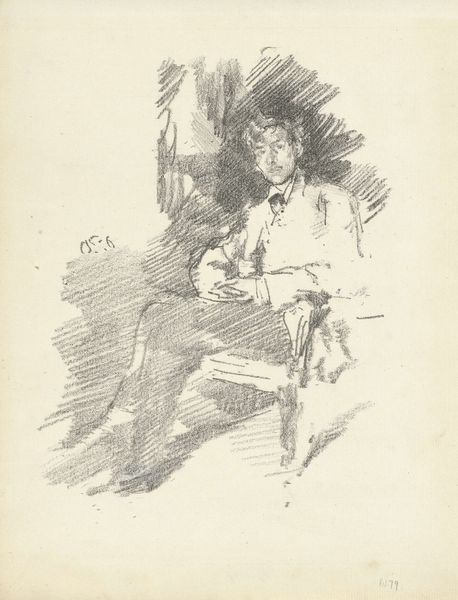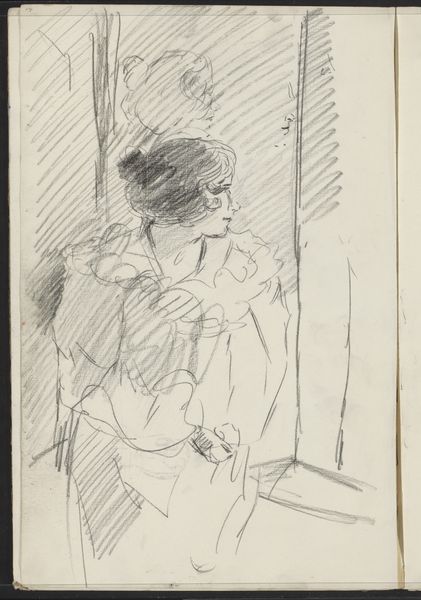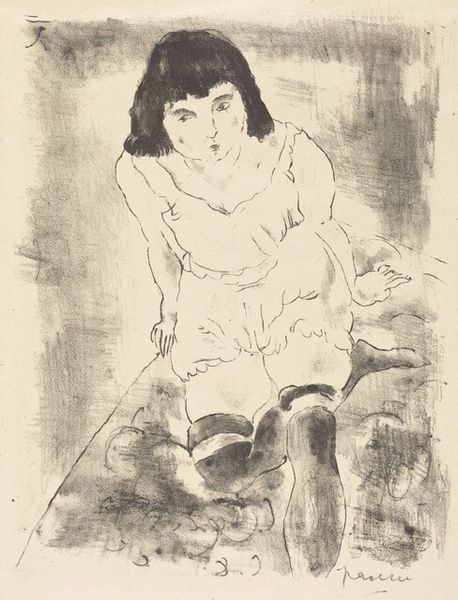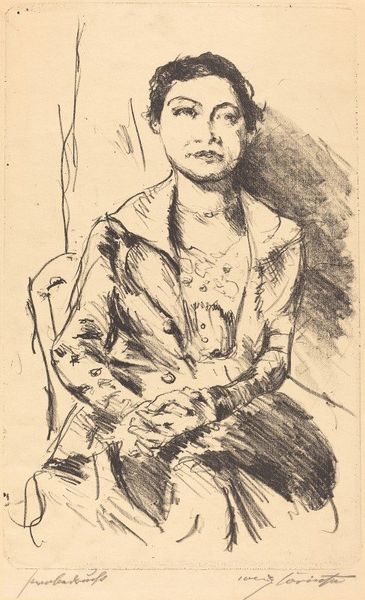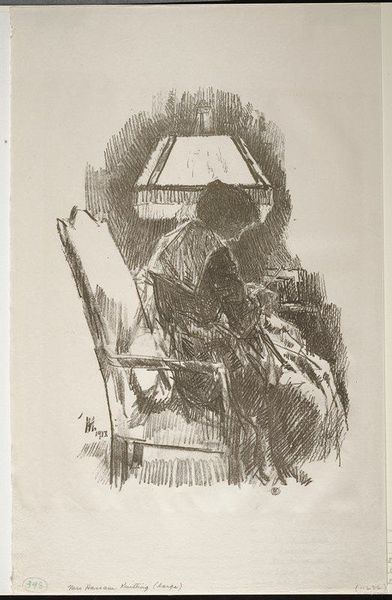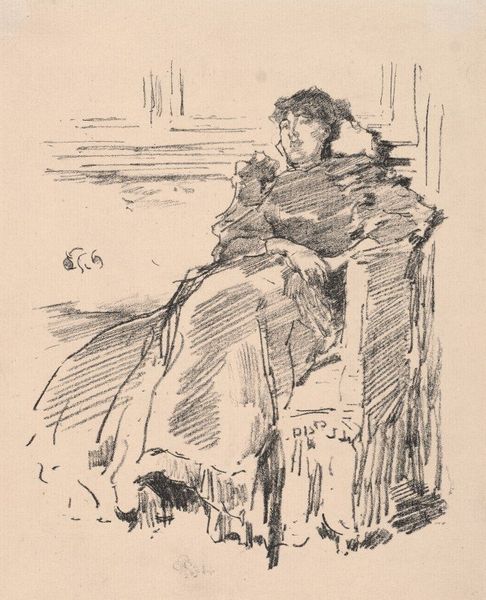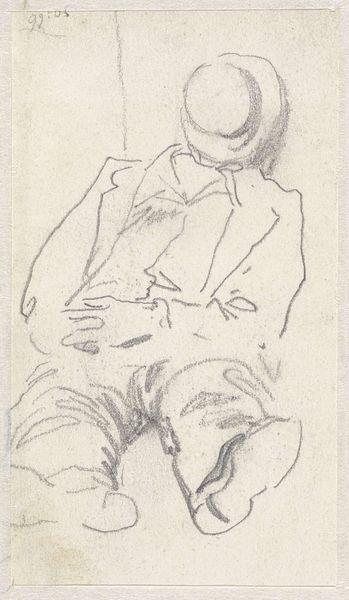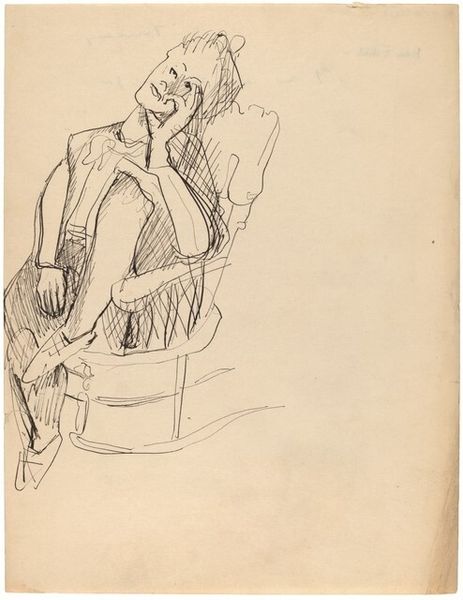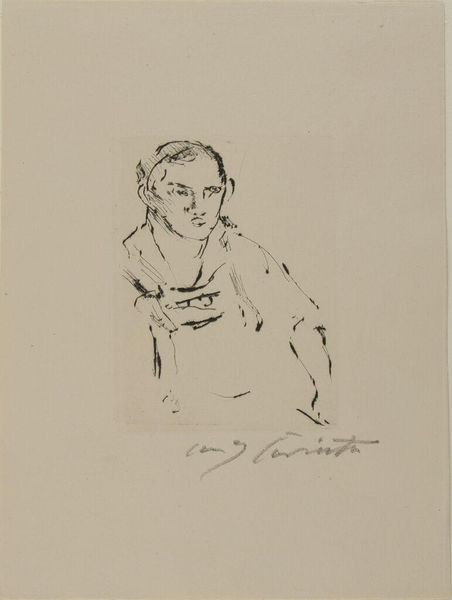
drawing, print, pencil
#
portrait
#
drawing
# print
#
pencil sketch
#
figuration
#
pencil drawing
#
pencil
#
modernism
Copyright: National Gallery of Art: CC0 1.0
Curator: Let’s turn our attention to William Brice’s 1962 pencil drawing, titled "Young Woman." What's your initial impression? Editor: The drawing has an ethereal, almost haunting quality, owing to the loose, sketch-like nature of the lines and the limited tonal range. There's an unfinished feeling. Curator: That "unfinished feeling," as you put it, speaks to Brice's exploration of modernist themes around identity. What does it mean to depict a “young woman” during a time of shifting social expectations and second-wave feminism? Is she contained, or perhaps on the verge of breaking free from the confines of conventional representation? Editor: Interesting. I see primarily a formal investigation of shape and form. Look at the repetition of rectangular shapes, echoed from the background right into the sitter’s shoulders, even in the rough outlines of her clothes. Curator: For me, that rectangular frame dominating the background suggests the historical constraints imposed on women within the domestic sphere, constantly defined by their roles in the home. Editor: I'd suggest we can move beyond this kind of biographical speculation. The real dynamism resides in the contrast between the heavily worked areas—her face—and the barely indicated hands and clothing. It generates a visual tension. Curator: Yet, the tension also highlights a historical silence and the active erasure of the experiences and contributions of women artists within dominant art historical narratives. Her lack of fully formed arms implies an inability to act freely and autonomously in society. Editor: A potent, if somewhat literal reading. I think we can appreciate this print for its elegant line work and masterful distribution of light and shadow. The composition uses negative space to great effect to invite the viewer in. Curator: Absolutely, and within that formal composition we see echoes of personal and collective histories. I’m left pondering the woman’s role and presence at the time it was made, not only in art, but broader culture. Editor: Indeed. We’ve explored how this simple drawing allows us entry points for vastly different interpretive possibilities.
Comments
No comments
Be the first to comment and join the conversation on the ultimate creative platform.
